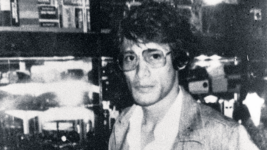Infamous Backpacker Murderer Charles Sobhraj Released from Prison

Serial killer Charles Sobhraj was deported from Nepal to France on 23 December 2022, after being released early from prison on health grounds by order of the Supreme Court.
The notorious figure is believed to have killed at least 20 backpackers from the West on the Asian hippie trail in the mid-1970s.
The French national of Vietnamese and Indian descent served 19 years of a life sentence, which translates to 20 years in Nepal.
The penalty was handed down in 2003 after Sobhraj was convicted of murdering US citizen Connie Jo Bronzich. A second life sentence was imposed after a 2014 trial, which saw him convicted of murdering Canadian Laurent Carrière.
Sobhraj was arrested in a Kathmandu casino in 2003, in relation to the murdered North American women, whom he’d killed in the South Asian nation in 1975, when he and his accomplice Canadian Marie-Andrée Leclerc entered Nepal using the passports of a recently murdered couple.
Also known as the Serpent, Sobhraj had the passports belonging to Dutch students Henk Bintanja and Cocky Hemker, whose strangled bodies had just been discovered in Pattaya, Thailand, where the killer and his hangers-on spent most of their time.
The Bikini Killer
Sobhraj possessed the ability to charm people into trusting him and was able to shift between social strata with ease. And in 1970, he began travelling in Asia, befriending backpackers from the West, drugging and robbing them, and then using their passports to move between countries.
By 1975, the serial killer had paired up with Indian man Ajay Chowdhury in Thailand. The pair’s first killing involved US traveller Teresa Knowlton. Her body was found wearing a bikini. And Sobhraj then hooked up with Leclerc. And prior to leaving to Nepal, four more westerners were killed.
After associates alerted Thai authorities to Sobhraj, he and Leclerc moved around, and further murders and crimes were committed as the pair crossed borders posing as jewel traders.
The Frenchman had a habit of drugging his victims, sometimes slowly over periods, which left them believing they had an illness.
And Sobhraj ended up attempting to drug around 60-odd French postgrads in New Delhi in mid-1976. But on his screwing up the dosage, some of the students came around and realised what had happened. They then apprehended the Frenchman and turned him into police.
Decades inside
After the unsuccessful drugging of the French postgraduate students, Sobhraj was sent to Delhi’s Tihar prison for 12 years. And after he drugged prison guards and escaped in 1986, the killer was recaptured and sentenced to a further 10 years.
By the time Sobhraj was released from South Asia’s largest prison in 1997, the statute of limitations had run out on a Thai warrant issued in his name, so he returned to Paris to live and charge large sums of money for interviews.
Indeed, a miscalculated return to Nepal in 2003, saw the killer spend a further two decades in a South Asian prison on outstanding murder charges.
“I am going straight back to France to my family. I have written a manuscript with a co-writer, Jean Charles Deniau, and the book will be published,” 78-year-old Sobhraj told Indian Express on his recent release from Nepali prison last week.
“I hope to live for many years to come. I’ll devote my life to my daughter and will probably keep myself busy with books, writing and business.”
Life sentences
Whereas a life sentence in Nepal is generally set at 20 years, the situation is very different in New South Wales.
Section 61 of the Crimes (Sentencing Procedure) Act 1999 (NSW) stipulates that:
A court is to impose a sentence of imprisonment for life on a person who is convicted of murder if the court is satisfied that the level of culpability in the commission of the offence is so extreme that the community interest in retribution, punishment, community protection and deterrence can only be met through the imposition of that sentence”.
It is important to note that for cases of murder, aggravated sexual assault in company, sexual intercourse with a child under 10 and drug offences carrying a maximum penalty of life imprisonment in NSW, life means life; in other words, the offender is ordered to spend the rest of their natural lives behind bars, unless a non-parole period is set by the court.
This change was brought in as part of the ‘truth in sentencing’ reforms in 1999, before which the average time spent in prison for a life sentence was 13 years, causing public outrage.
Given the severity of a life sentence, section 61 requires that the nature and circumstances must be so serious that retribution, punishment, community protection and deterrence can only be met through a sentence of life, as opposed to, for example, a lengthy prison term.







